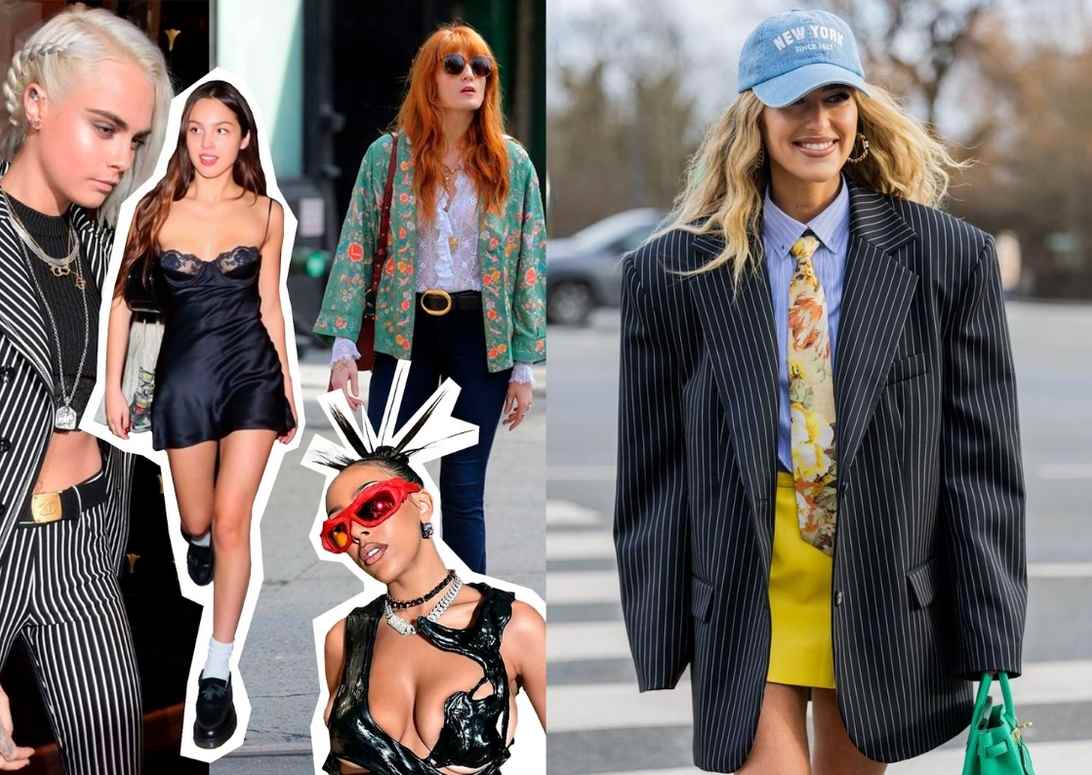
Aesthetic fashion is not just a passing trend; it is a reflection of a lifestyle where digital posturing and nostalgia merge to create a unique visual identity. From Instagram and TikTok to BeReal and Tumblr, social media has been the perfect stage for consolidating this movement, where vintage and contemporary styles coexist in perfect harmony.
This style thrives on a clear idealization of the past: we dream of the effortless looks of the ’70s, the rebellious spirit of the ’80s, and the cinematic essence of the ’90s. Aesthetic fashion is as diverse as those who embrace it, adapting to various inspirations ranging from nostalgic minimalism to the maximalist aesthetics of the digital age.
But what does it really mean to be aesthetic? How can you identify the key pieces and combinations of this trend? If you’ve ever felt drawn to retro silhouettes, dreamy filters, or outfits that look straight out of a Pinterest mood board, you might already be part of this universe without even realizing it. Keep reading to discover everything about this style phenomenon that is shaping both the present and future of fashion!
Aesthetic fashion has transcended the simple choice of outfits to become a form of expression that extends from clothing to interior design, photography, and digital aesthetics on social media. It is a constantly evolving style, influenced by various eras and subcultures that find endless inspiration in nostalgia and the reinterpretation of the past. Here are some of the most popular current trends in aesthetic fashion:
? Vintage Clothing: Second-hand fashion and retro styles remain on the rise, with strong influences from the ‘80s, ‘90s, and early 2000s. Oversized jackets, high-waisted pants, corsets, and slip dresses have become iconic pieces.
? Pastel and Neon Colors: Contrasting color palettes are key to this aesthetic. Soft shades like lavender and pastel pink create a romantic feel, while bold hues like neon green or fuchsia add a daring, futuristic touch.
? Statement Accessories: Details play a crucial role. Small geometric sunglasses, pearl or colorful bead necklaces, chunky rings, and holographic or transparent handbags are essential elements in any aesthetic look.
? Inspiration from Pop Culture and Digital Art: The digital world has greatly influenced this style. Aesthetics like vaporwave, with its neon tones and ‘80s graphics, or cyberpunk, with its futuristic and tech-driven aesthetic, have left a significant mark on modern fashion.
? Bold Patterns and Textures: Mixing different prints and fabrics is a defining characteristic. From plaid and stripes to velvet, faux leather, and satin textures, experimentation is key to achieving a unique aesthetic look.
However, aesthetic fashion is not limited to clothing. This style extends to home decor, graphic design, social media image editing, and even the selection of photo filters. It is a phenomenon that continues to evolve, adapting to new cultural and technological influences while constantly redefining what it means to be aesthetic.
In fashion, the concept of aesthetic refers to a set of visually appealing styles that follow a specific thematic direction. It is a movement characterized by the pursuit of visual beauty and harmony in clothing details, blending elements from various cultural and artistic trends.
The term originates from the English word aesthetic, which translates to “esthetic” or “aesthetics” and refers to a collection of visual styles that focus on creating a specific and cohesive image. Rather than adhering to traditional fashion norms, aesthetic fashion embraces a more free and subjective approach, where personal expression and the exploration of unique styles are essential.
This fashion movement values individuality, allowing people to experiment with different influences—whether vintage, futuristic, minimalistic, or maximalist—while maintaining a strong visual identity. Aesthetic fashion is not just about following trends; it is about curating a look that reflects one’s personality, inspirations, and creative vision.
The concept of “aesthetic” in fashion began to gain popularity on digital platforms like Tumblr, Pinterest, and Instagram in the early 2010s. On these spaces, users shared inspirational images and photographs, usually grouped into thematic boards that reflected a specific color palette or visual atmosphere. These boards were often filled with images of nature, art, music, and fashion that followed a stylistic line or a common emotional feeling, leading to the phenomenon of the “aesthetics” we know today.
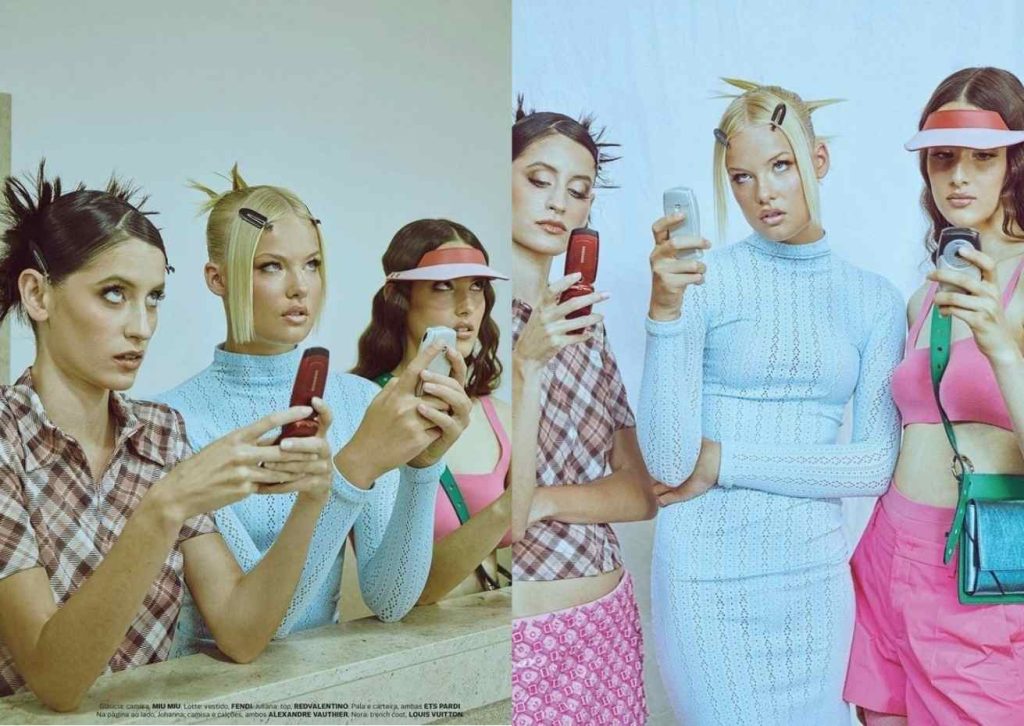
Aesthetic fashion draws inspiration from a variety of cultural and artistic movements that have shaped human history. The most notable include minimalism, grunge, vintage, art deco, and surrealism, among others. These cultural influences have led to different substyles within aesthetic fashion, such as cottagecore, which evokes an idealized rural life with romantic touches, or vaporwave, an aesthetic that blends nostalgia for 80s and 90s technology with influences from digital art and pop culture.
In addition to artistic influences, aesthetic fashion is also deeply connected with social and cultural movements. The millennial and Generation Z generations, in particular, have embraced this approach as a way to assert their identity in a world saturated with visual information. These aesthetics are not limited to fashion; they extend to other areas such as interior design, digital art, graphic design, and even music.
Aesthetic fashion has come a long way, evolving from a niche trend in digital communities to a global phenomenon that has redefined the way we perceive fashion and self-expression. Its evolution has been deeply influenced by the expansion of the Internet and social media, platforms that have allowed the creation, experimentation, and diffusion of this style in all its forms.
In its early days, the term “aesthetic” was associated with a specific aesthetic in spaces like Tumblr, Pinterest, and Instagram, where users shared images, color palettes, and visual references that evoked nostalgia and harmony. These early signs gave way to a vibrant community that began to adopt and define different branches of the style, drawing inspiration from past decades, artistic movements, and pop culture.
With the arrival of TikTok and the rise of instant visual content, aesthetic fashion became even more democratized. What was once a subcultural phenomenon, embraced by small groups with specific interests, transformed into a dominant current that influences street style, interior design, music, and even people’s digital identities. This evolution has not only allowed individuals to explore and combine different aesthetics, but it has also led brands and designers to reinterpret these styles within conventional fashion.
With the rise of social media and the constant reinterpretation of trends, what began as a niche movement in digital communities soon transcended into the world of mainstream fashion. In this way, aesthetic fashion shifted from being tied to specific subcultures to becoming a global phenomenon embraced by designers, brands, and style enthusiasts.
In its early days, aesthetic fashion was strongly linked to particular subcultures, especially online, where groups on platforms like Tumblr, Instagram, and Pinterest created and shared unique visual styles. Each subculture adopted its own aesthetic, from soft girl to dark academia, providing a rich variety of styles intertwined with influences from music, art, and literature.
However, with the rise of social media, aesthetic fashion began to transcend its online origins and started to influence mainstream fashion. Renowned designers and global brands began to incorporate elements of these aesthetics into their collections, adapting concepts like 90s nostalgia, pastel colors, minimalism, or contrasting texture combinations. This adaptation resulted in a democratization of the style, making trends accessible to a wider audience beyond the confines of the Internet.
Today, aesthetic fashion has not only integrated into runways and street style but has also become a form of individual expression, where people feel free to explore and create their own visual identity, regardless of industry conventions. This has led to an even more diverse range of styles, which continue to evolve and merge as digital culture and fashion brands intertwine.
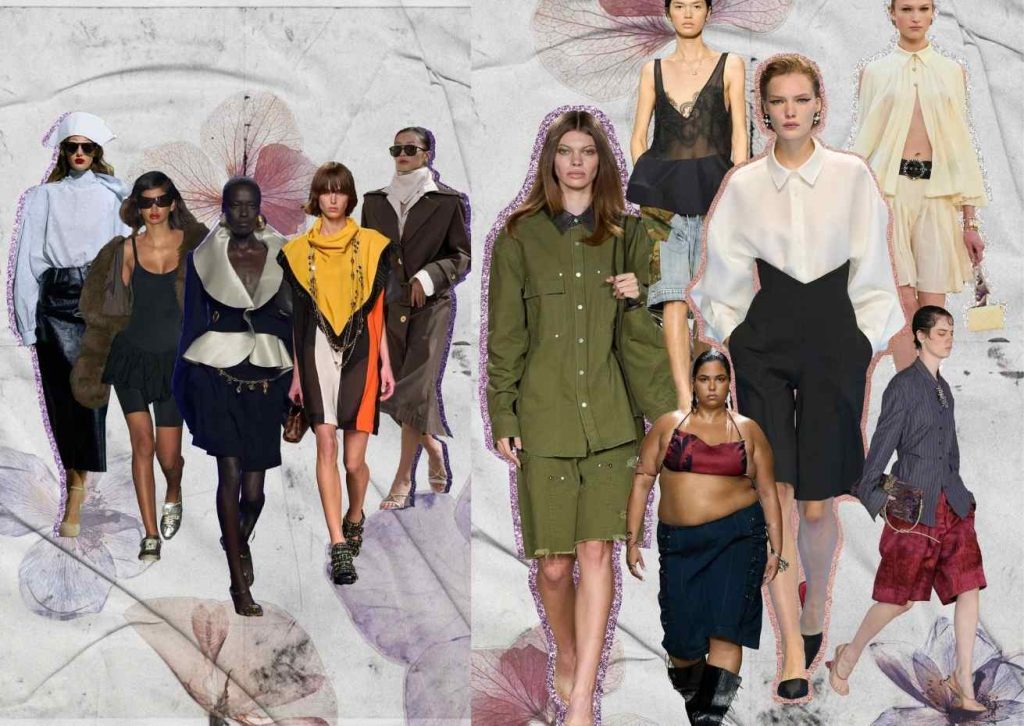
Aesthetic fashion is a reflection of various cultural movements that have shaped different eras and continents. Its evolution has been influenced by music, cinema, art, and social movements. Some of the main influences include:
Thanks to globalization and the expansion of social media, these influences have converged, giving rise to a versatile and constantly evolving style.
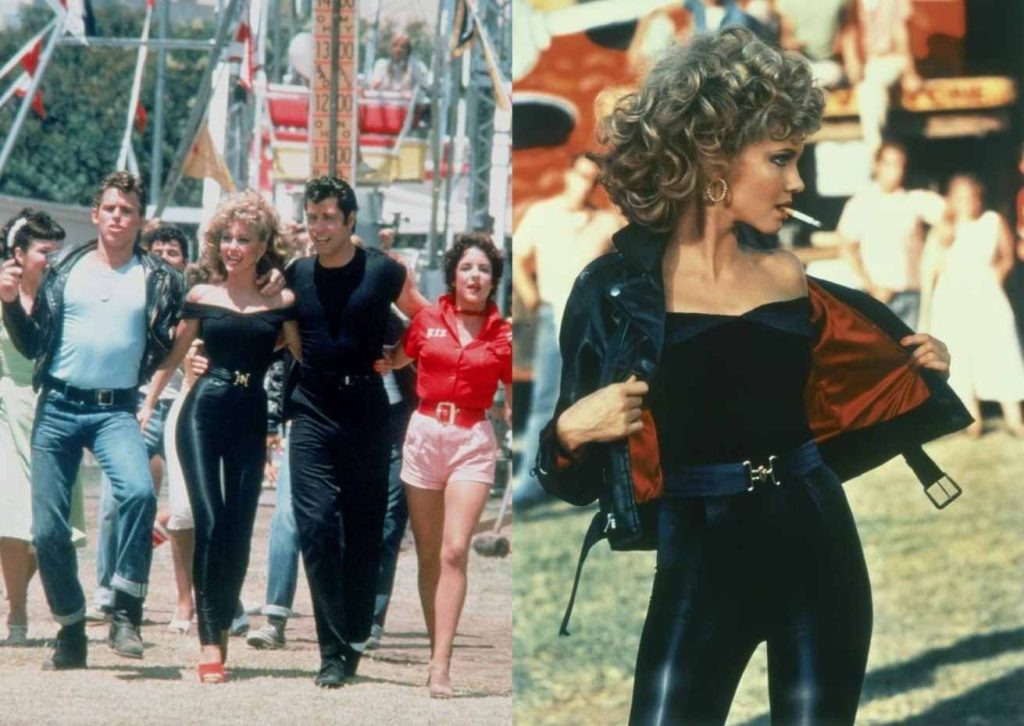
Aesthetic style is a form of fashion and lifestyle that aims to reflect a specific visual aesthetic, where harmony between colors, patterns, and details is key to achieving a unique and authentic look. Below are the main characteristics that define this style:
The current aesthetic style is characterized by the use of soft and pastel colors, such as pink, lilac, mint, and peach, which create a relaxing atmosphere. Warm and natural tones, like yellows and terracotta, are also included and sometimes combined with vibrant neon or metallic accents for contrast. Monochromatic palettes are common to achieve a cleaner, more harmonious visual effect.
As for patterns, geometric designs with simple lines and shapes dominate, alongside natural textures like marble or wood, which add warmth. Retro motifs, such as checkered patterns or vintage graphics, are used along with soft and delicate floral prints. This style emphasizes minimalism, prioritizing simplicity and calm. It also incorporates nostalgic elements from past decades and details like LED lights or simple accessories that reinforce its visually appealing and emotional character.
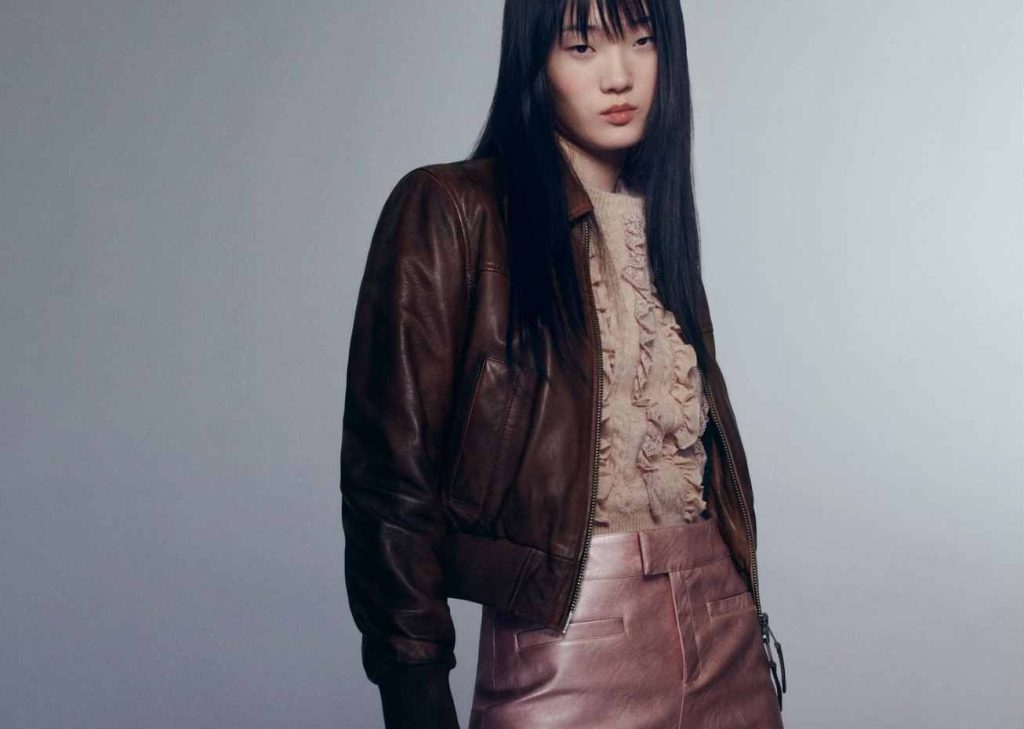
To complete the aesthetic look, some key pieces are essential and vary depending on the chosen substyle. However, there are certain basics that are common across almost all styles within this fashion:
Adopting the aesthetic style is a way to express your personality through fashion and decor. There are no strict rules, but some key steps are:
What matters most is that the aesthetic style is an authentic extension of yourself.
Within aesthetic fashion, there are various substyles characterized by their unique aesthetics, influenced by different eras, cultural movements, and trends. Here are some of the most popular:
Inspired by 90s fashion, especially by bands like Nirvana, the grunge style is characterized by dark tones, oversized clothing, plaid shirts, denim jackets, and heavy boots. The garments often have a worn, ripped, or aged look, which creates a rebellious vibe. This style reflects a laid-back, countercultural attitude, perfect for those who want a more effortless and bold look.
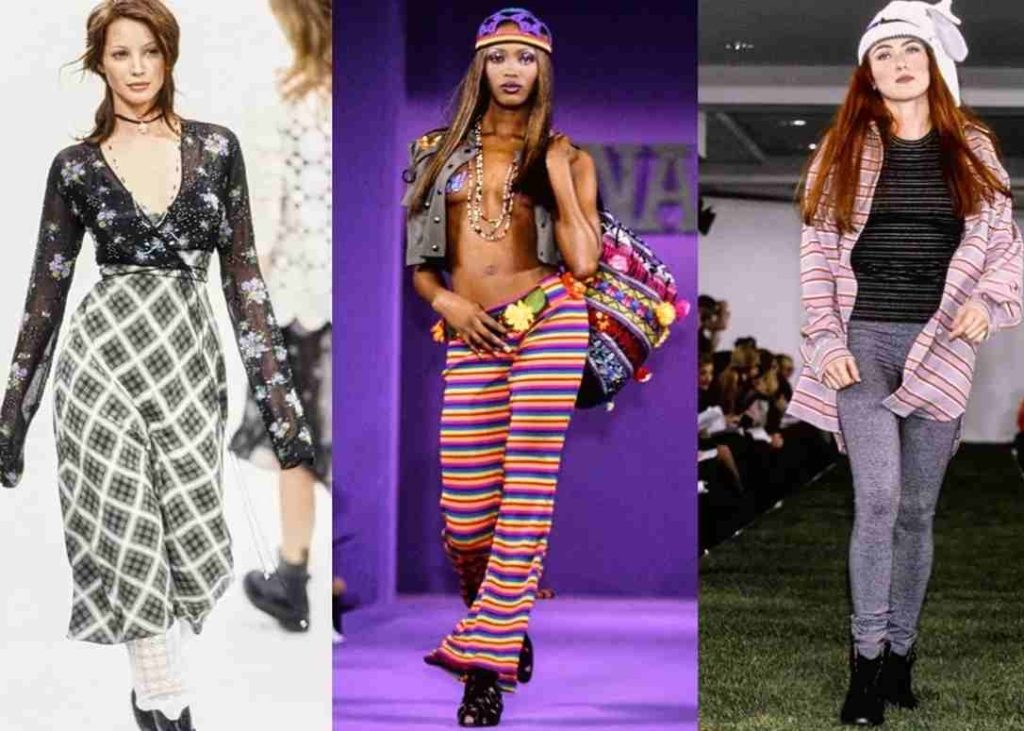
This style is inspired by rural life, particularly nature, and seeks to capture the essence of a peaceful and simple life. Cottagecore is characterized by long, loose dresses, soft colors, floral prints, and delicate fabrics like linen or cotton. Accessories such as baskets, flowers, and vintage pieces are common. This style evokes nostalgia for past times, especially rural life, and is ideal for those who appreciate a more natural and romantic lifestyle.
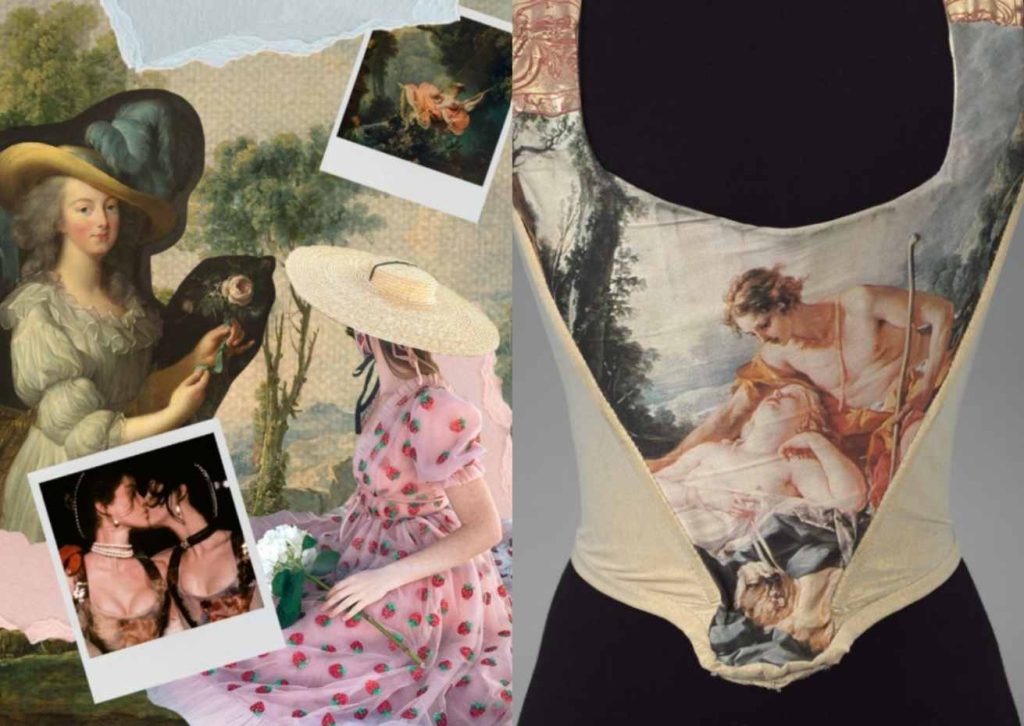
Vaporwave is a digital and retrofuturistic aesthetic inspired by the 80s and 90s, blending digital art, electronic music, and a neon color palette, such as pink, blue, and purple. This style focuses on both retro and modern elements, using pixelated graphics, pop culture imagery, and a sense of technological nostalgia. It evokes the aesthetic of the early days of the Internet, with a surreal, dream-like touch.
This substyle takes elements from past decades, especially the 80s and 90s, and blends them with contemporary touches. Vintage clothing often includes second-hand pieces, warm colors, and details like leather jackets, retro logo t-shirts, and high-waisted jeans. Additionally, accessories such as oversized sunglasses and platform boots are popular. This style has a nostalgic vibe, but it can also incorporate modern influences for a unique twist.
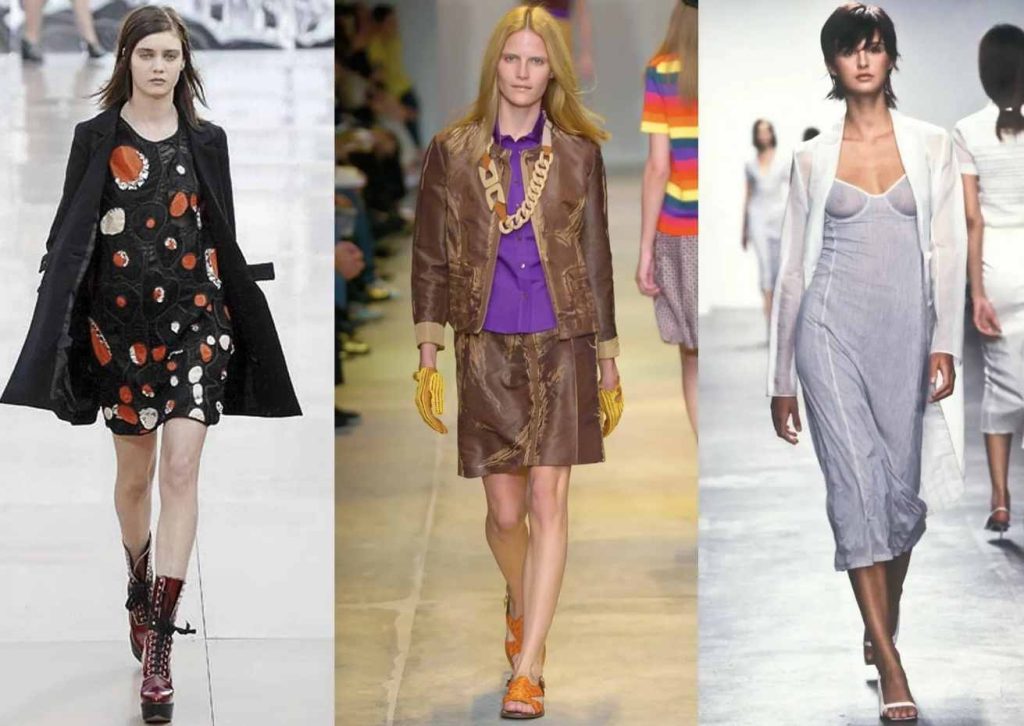
Compartir